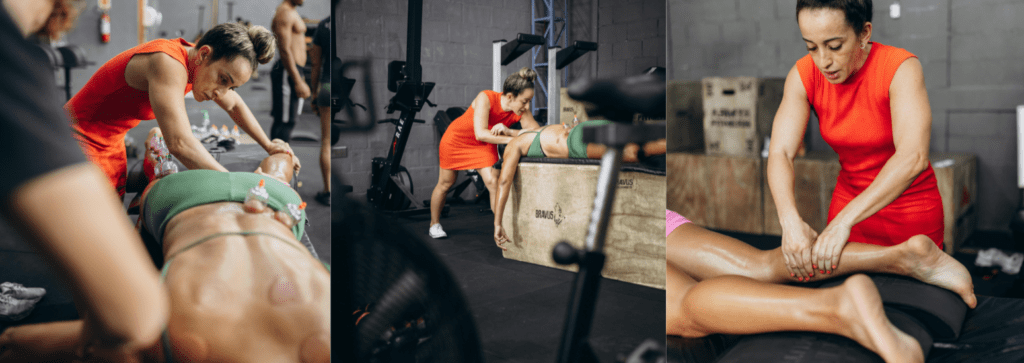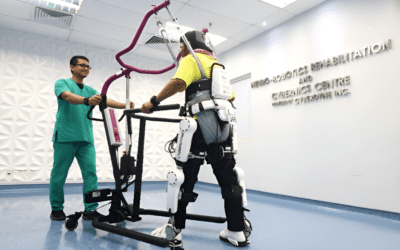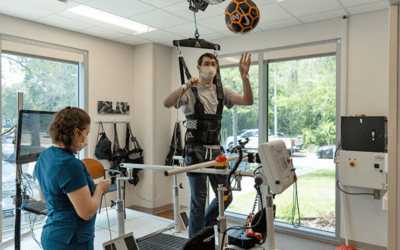Recognizing the need for Neurorehabilitation is crucial for effective recovery following a brain injury. Brain injury symptoms can vary widely depending on the severity and location of the injury.

Recognizing the Signs of Brain Injury
Here are some common symptoms associated with brain injuries:
Physical Symptoms
- Headache that may be persistent or worsen over time
- Nausea or vomiting
- Dizziness or loss of balance
- Fatigue or drowsiness
- Difficulty with coordination and motor skills
- Weakness or paralysis, often on one side of the body
- Seizures
Sensory Symptoms Addressed by Neurorehabilitation
- Sensitivity to light or sound
- Blurred vision or double vision
- Ringing in the ears (tinnitus)
- Changes in the sense of taste or smell
Cognitive Symptoms That Neurorehabilitation Can Improve
- Memory loss or confusion
- Difficulty concentrating or paying attention
- Disorientation, often regarding time, place, or person
- Difficulty with problem-solving, reasoning, or judgment
Emotional and Behavioral Changes Treatable with Neurorehabilitation
- Mood swings or unexplained emotional changes
- Anxiety, depression, or irritability
- Impulsivity or lack of inhibition
- Difficulty controlling emotions or behavior
Sleep Disturbances
- Difficulty falling or staying asleep
- Excessive sleeping or insomnia
- Unusual drowsiness or a general feeling of lethargy
Speech and Language Problems Requiring Neurorehabilitation
- Slurred or slow speech
- Difficulty finding the right words or forming coherent sentences
- Problems understanding spoken or written language
These symptoms may appear immediately after the injury or develop over time. If someone experiences these signs following head trauma, seeking medical evaluation and potential Neurorehabilitation is crucial to promote recovery and manage symptoms.
The Role of Neurorehabilitation in Brain Injury Recovery
After a brain injury, recognizing the signs that indicate a need for Neurorehabilitation can be essential for a successful recovery.

Here’s a detailed look at ten common signs that often suggest the need for specialized Post Brain Injury Neurorehabilitation/Brain Injury Recovery…
Difficulty with Movement or Coordination and Neurorehabilitation Solutions
Brain injuries can disrupt motor control, leading to issues with walking, balance, and coordination. Patients may have difficulty with tasks that require fine motor skills, such as buttoning a shirt, holding a pen, or gripping objects. Neurorehabilitation helps retrain muscles and improve coordination through repetitive, targeted exercises.
Speech and Language Recovery with Neurorehabilitation
Many brain injury patients experience challenges with speech and language, known as aphasia. This can include trouble finding words, forming sentences, or understanding spoken or written language. Speech therapy in Neurorehabilitation focuses on helping patients recover communication skills, often through exercises that improve articulation, memory, and comprehension.
Cognitive Impairments Treated Through Neurorehabilitation
Brain injuries can affect cognitive functions such as memory, concentration, and problem-solving abilities. Patients may experience difficulty remembering information, staying focused, or making decisions. Neurorehabilitation includes cognitive therapy, which provides mental exercises to restore cognitive functions and develop coping strategies for areas of difficulty.
Managing Emotional Instability
Emotional changes, such as mood swings, depression, anxiety, or irritability, are common after a brain injury. Neurorehabilitation addresses these changes through behavioral therapy, helping patients learn to manage emotions, improve resilience, and adapt to new emotional challenges post-injury.
Strategies for Weakness or Paralysis Recovery in Neurorehabilitation
Brain injuries can alter how the brain processes sensory information, leading to changes in vision, hearing, touch, taste, or smell. Patients may experience heightened or reduced sensitivity in one or more senses. Neurorehabilitation can include sensory retraining exercises that help the brain adapt to altered sensory perceptions, improving comfort and awareness.
Strategies for Weakness or Paralysis Recovery in Neurorehabilitation
Many brain injury patients experience weakness or even paralysis on one side of the body (hemiplegia), impacting mobility and independence. Neurorehabilitation provides physical therapy and, in some cases, robotic assistance to strengthen muscles, promote motor control, and encourage the brain to build new neural pathways for movement.
Chronic Pain or Headaches
Persistent pain, particularly headaches, is common after a brain injury. Chronic pain can impact the quality of life and hinder recovery. Neurorehabilitation can involve pain management strategies, such as therapeutic exercises, relaxation techniques, and biofeedback, to help patients manage and reduce pain.
Combating Fatigue or Low Energy Levels
Fatigue, often unrelated to physical exertion, is a frequent symptom following a brain injury. Patients may feel extreme tiredness, even after adequate rest, which can interfere with daily activities. Neurorehabilitation incorporates energy-conservation techniques and structured activity pacing to help patients build stamina and improve their energy levels.
Behavioral Therapy in Neurorehabilitation for Post-Injury Challenges
Brain injuries can result in uncharacteristic behaviors, such as impulsivity, aggressiveness, or social inappropriateness, which can be distressing for both patients and their families. Neurorehabilitation involves behavioral therapy to help patients manage behaviors, regain self-control, and understand the effects of their injury on social interactions.
Regaining Independence in Daily Activities Through Neurorehabilitation
Difficulty performing everyday tasks independently, such as dressing, cooking, or personal hygiene, is a common challenge after a brain injury. Neurorehabilitation includes occupational therapy, which focuses on helping patients relearn essential skills, modify their environments, and develop adaptive strategies to regain independence in daily life.
These signs point to areas where Neurorehabilitation can be most beneficial, offering specialized therapies tailored to address the specific impacts of a brain injury and helping patients work toward functional recovery and improved quality of life.
Conclusion: When to Seek Professional Help for Neurorehabilitation
Recognizing signs that indicate the need for Neurorehabilitation after a brain injury is essential for effective recovery and quality of life improvement. Symptoms like impaired movement, cognitive challenges, sensory disturbances, and emotional shifts highlight areas where specialized therapies can make a transformative difference. By addressing these signs early with targeted Neurorehabilitation, individuals can enhance their chances of regaining independence, rebuilding lost skills, and achieving a more fulfilling post-injury life.



